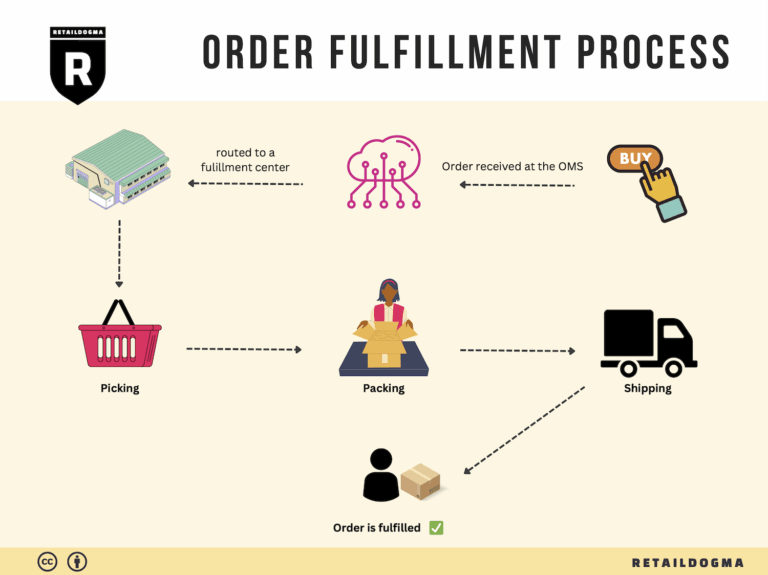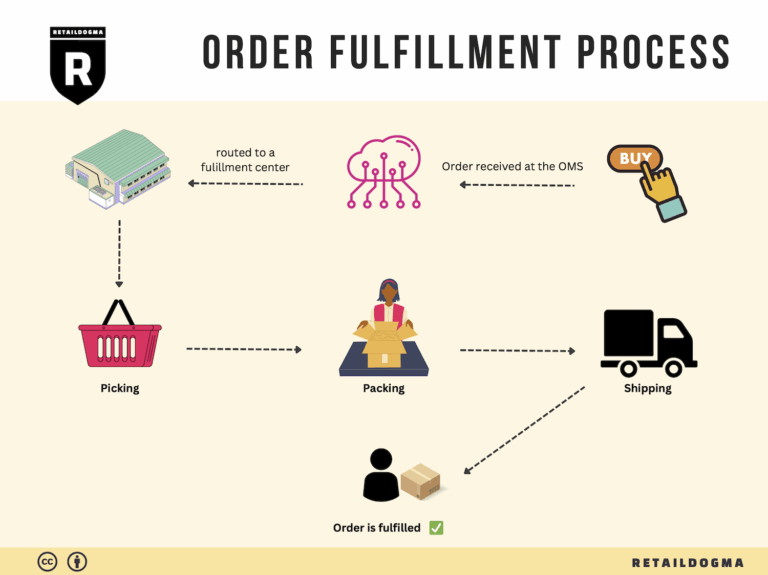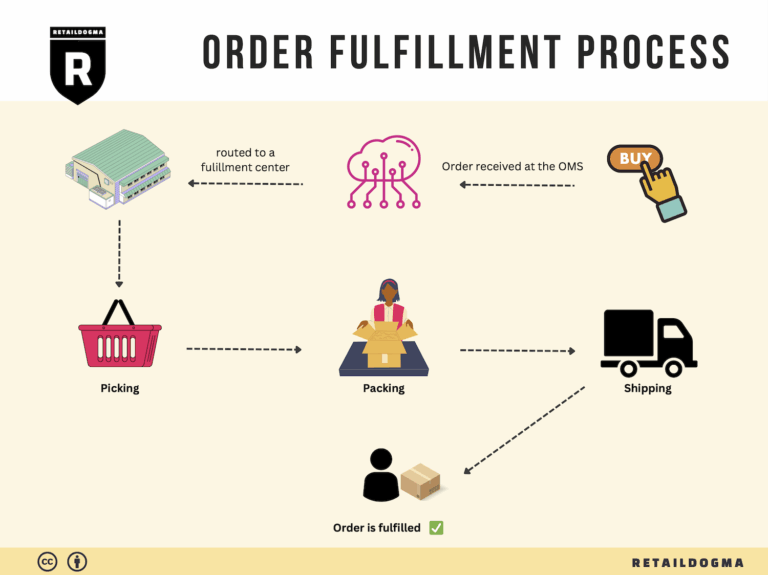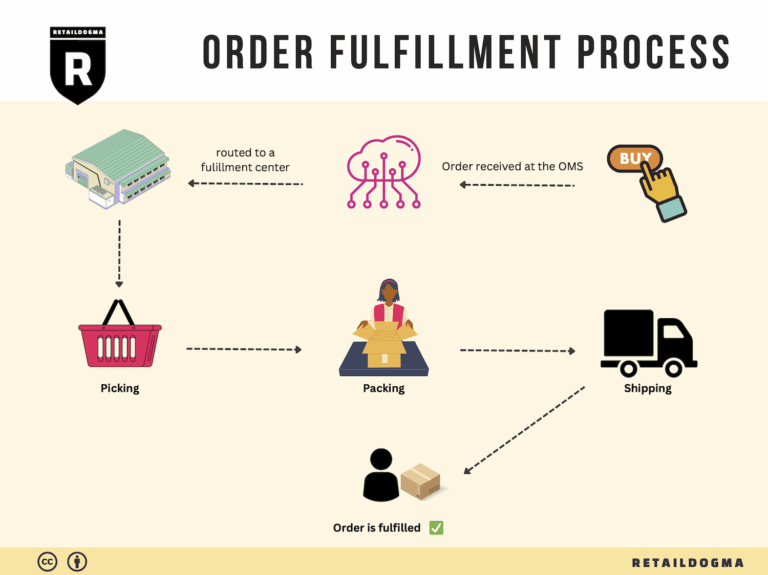Ecommerce Fulfillment Services: The Ultimate Guide (2025)
What is E-commerce Fulfillment? An Introduction for Growing Businesses
The Challenge of Packing and Shipping Orders
As a growing online business, you may find yourself grappling with the overwhelming tasks of packing and shipping orders. The excitement of expanding your customer base often comes hand-in-hand with logistical headaches. From managing inventory to ensuring timely deliveries, the fulfillment process can quickly become a daunting challenge that distracts you from your core business activities. This is where understanding e-commerce fulfillment becomes crucial.
What is E-commerce Fulfillment?
At its essence, e-commerce fulfillment is the process of getting a product from your warehouse to your customer’s doorstep. It encompasses everything from receiving inventory and storing it, to picking, packing, shipping, and handling returns. Effective fulfillment can be the backbone of your business, influencing customer satisfaction, repeat purchases, and ultimately, your bottom line.
What This Guide Covers
In this guide, we will explore various fulfillment models that can help streamline your operations. You will learn about Third-Party Logistics (3PL) and Fulfillment by Amazon (FBA), two popular options that can significantly impact your scalability. Each model has its own advantages and drawbacks, and we’ll break these down to help you make an informed decision.
Furthermore, we will delve into the core services offered by fulfillment partners, including inventory management, order processing, and shipping solutions. Knowing what services are available will enable you to select a partner that aligns with your business needs and customer expectations.
Choosing the Right Fulfillment Partner
Selecting the right fulfillment partner is critical to your success. We will provide you with practical tips on what to consider when evaluating potential partners, such as location, technology integration, and customer support. A strategic partnership can alleviate the burden of logistics, allowing you to focus on growing your business.
Understanding Pricing Structures
Finally, we will discuss pricing structures associated with fulfillment services. Understanding how costs are calculated—whether through per-order fees, storage fees, or shipping rates—will empower you to budget effectively and maintain profitability.
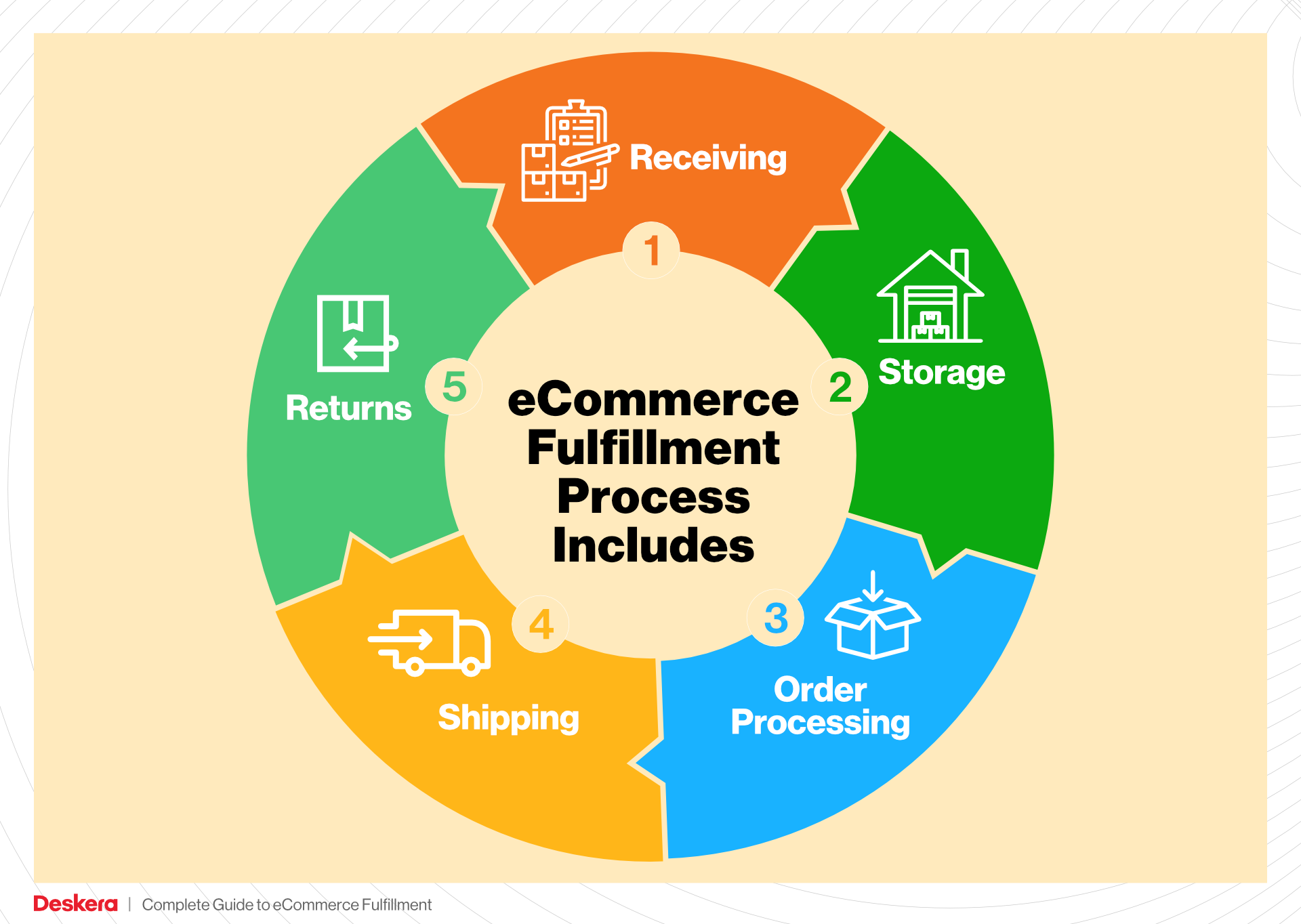
Empowering Smart Decisions
The goal of this guide is to empower you to make smart decisions about your logistics. By equipping you with the knowledge of fulfillment models, core services, partner selection, and pricing, you will be well-positioned to optimize your operations and enhance your customer experience. Let’s dive into the world of e-commerce fulfillment and discover how you can streamline your logistics to fuel your business growth.
What You’ll Learn In This Guide
- What is E-commerce Fulfillment? An Introduction for Growing Businesses
- The Order Fulfillment Process: From ‘Buy’ Button to Customer’s Door
- Comparing Fulfillment Models: In-House vs. 3PL vs. Dropshipping
- A Deep Dive into Amazon FBA: Pros, Cons, and Who It’s For
- Core Services Offered by Fulfillment Centers
- How to Choose a Fulfillment Partner: A 6-Point Checklist
- Understanding Fulfillment Pricing: A Breakdown of Common Fees
- Frequently Asked Questions (FAQs) about Fulfillment
- Conclusion: Is Outsourcing Fulfillment the Right Move for Your Business?
- Important Disclaimer
The Order Fulfillment Process: From ‘Buy’ Button to Customer’s Door
1. Receiving Inventory
The order fulfillment process begins with receiving inventory at the fulfillment center, such as the Amazon ABE3 Fulfillment Center. When shipments arrive, they are checked against purchase orders to ensure accuracy in quantity and condition. This step is crucial as it lays the foundation for a smooth fulfillment process. Any discrepancies or damaged goods must be addressed immediately to maintain inventory integrity and prevent future issues.
Key Term: SKU (Stock Keeping Unit)
Each product is assigned a unique SKU, which is essential for tracking and managing inventory. The SKU system allows warehouse staff to efficiently identify products and manage stock levels, ensuring that the right items are available for order fulfillment.
2. Warehouse Storage
Once inventory is received and verified, products are stored in designated areas within the warehouse. Effective warehouse storage involves organizing products in a manner that maximizes space and accessibility, often using shelving systems and bins. This organization is vital for efficient order picking later in the process.
The layout of the warehouse should facilitate quick access to high-demand items, which can significantly reduce order processing times. Regular audits of storage locations help maintain accuracy in inventory counts and can identify slow-moving items that may need to be discounted or promoted.
Key Term: ABC Analysis
This inventory categorization technique helps businesses prioritize their stock based on value and turnover rates. Classifying items into categories (A, B, and C) allows for more strategic management of storage space and resources.
3. Order Picking
When a customer places an order, the next step is order picking. This involves retrieving the selected products from their storage locations based on a pick list, which outlines the items and their respective SKUs. Efficient picking is essential to ensure that orders are fulfilled accurately and promptly.
There are various picking methods, such as single order picking, batch picking, and zone picking. The choice of method can depend on the volume of orders and the layout of the warehouse. For instance, batch picking can increase efficiency by allowing workers to pick multiple orders simultaneously.
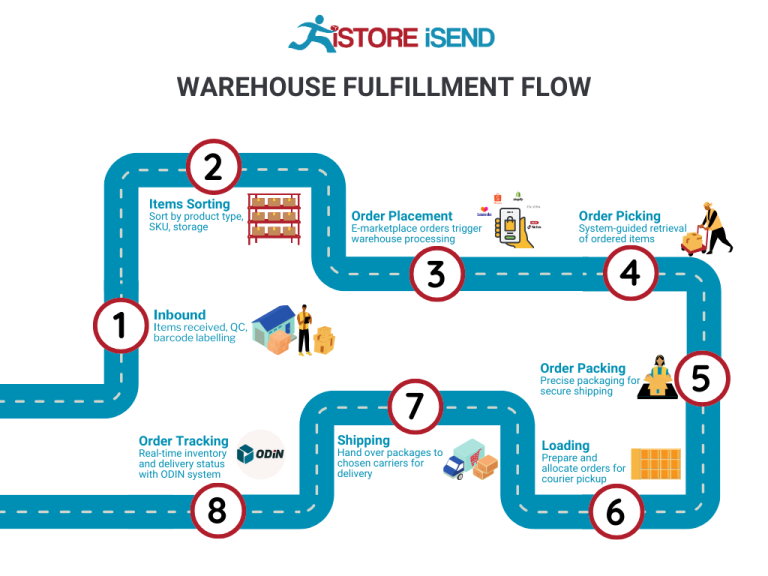
Key Term: Pick List
A pick list is a document that details the items and quantities required for a specific order. It guides warehouse staff through the picking process, ensuring accuracy and efficiency.
4. Order Packing
After products have been picked, they must be packed for shipment. This step involves checking items against the order to ensure accuracy and then securely packaging them for transit. Proper packing is critical to prevent damage during shipping and to enhance the unboxing experience for customers.
The packaging process may also involve labeling each package with shipping information and including any necessary documentation, such as invoices or return instructions. Using the right materials, like bubble wrap or packing peanuts, can significantly reduce the risk of damage.
Key Term: Packing Slip
A packing slip is included with the shipment, detailing the items enclosed. It serves as both a receipt for the customer and a checklist for the warehouse team to verify that the correct items were packed.
5. Shipping & Delivery
The final step in the order fulfillment process is shipping and delivery. Once packed, orders are handed over to carriers for transportation to the customer’s address. This stage is critical for customer satisfaction, as timely delivery can significantly impact the overall shopping experience.
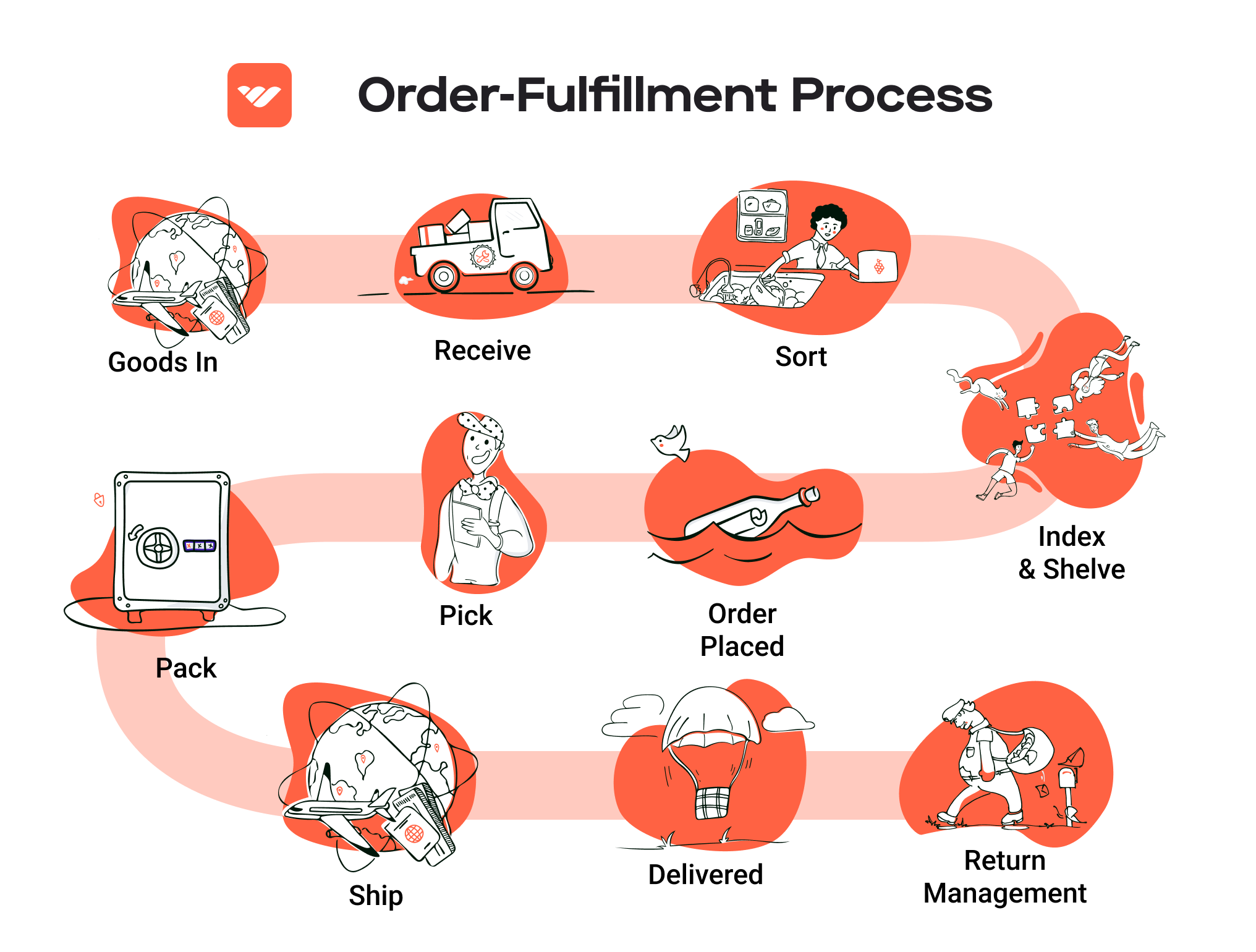
Businesses must choose reliable carriers and consider various shipping options, such as standard, expedited, or same-day delivery. Tracking capabilities are also essential, as they allow customers to monitor their orders in real-time and reduce inquiries about shipment status.
Key Term: Last-Mile Delivery
This term refers to the final step of the delivery process when the package is transported from a distribution center to the end customer. Optimizing last-mile delivery is crucial for reducing costs and improving customer satisfaction, especially as e-commerce continues to grow.
By understanding and effectively managing each step in the order fulfillment process, e-commerce businesses can enhance operational efficiency, reduce costs, and improve customer satisfaction, ultimately supporting their growth and scalability in the competitive online marketplace.
Comparing Fulfillment Models: In-House vs. 3PL vs. Dropshipping
Fulfillment Model Comparison
| Model | Who Handles Inventory | Best For (Business Stage) | Key Advantage | Key Disadvantage |
|---|---|---|---|---|
| In-House Fulfillment | Business itself | Established businesses | Greater control over inventory and operations | High overhead costs and resource requirements |
| Third-Party Logistics (3PL) | External logistics provider | Growing businesses | Scalability and reduced operational burden | Less control over logistics and potential for miscommunication |
| Dropshipping | Supplier | Startups or new businesses | Low startup costs and inventory risk | Lower profit margins and less control over fulfillment quality |
In-House Fulfillment
In-house fulfillment refers to managing the entire inventory and shipping process within your own organization. This model is typically adopted by established businesses that have a stable customer base and can afford the infrastructure required to maintain their own warehouse, staff, and logistics. The primary advantage of in-house fulfillment is the level of control it offers. Businesses can manage their inventory directly, ensuring that products are stored, packed, and shipped according to their specific standards. This model also allows for quicker response times to customer inquiries and more straightforward handling of returns or exchanges.
However, the downside of in-house fulfillment includes significant overhead costs. Businesses need to invest in storage space, staffing, and technology, which can strain resources, especially for smaller companies. Additionally, as order volumes increase, the complexity of managing logistics can grow, necessitating further investments in technology and workforce training. This model can be efficient for businesses with consistent sales, but it may limit scalability as demand fluctuates.
Third-Party Logistics (3PL)
Third-party logistics (3PL) involves outsourcing fulfillment operations to an external logistics provider. This model is ideal for growing businesses that need to scale quickly without the burden of managing logistics in-house. 3PL providers handle everything from inventory storage to order processing and shipping, allowing businesses to focus on core operations such as marketing and product development. The primary advantage of 3PL is scalability; as your business grows, the 3PL can easily accommodate increased order volumes without requiring you to invest in additional infrastructure.
Despite its advantages, 3PL does come with challenges. One significant drawback is the loss of direct control over logistics, which can lead to potential miscommunication or discrepancies in service quality. Businesses may also face challenges in aligning their operational standards with those of the 3PL provider. Furthermore, while 3PL can be cost-effective, service fees can add up, particularly if your business has variable shipping demands or requires specialized handling. Choosing the right 3PL partner is crucial, as this relationship can significantly impact customer satisfaction and brand reputation.
Dropshipping
Dropshipping is a fulfillment model where the retailer does not hold inventory but instead relies on suppliers to ship products directly to customers. This model is particularly appealing to startups and new businesses due to its low barrier to entry. With dropshipping, entrepreneurs can launch e-commerce businesses without the need for significant upfront investment in inventory, warehousing, or fulfillment processes. The key advantage of dropshipping is that it minimizes financial risk, allowing businesses to test products and markets without the burden of unsold stock.
However, dropshipping also has notable disadvantages. The most significant drawback is the lower profit margins, as suppliers typically charge higher prices than what a retailer might pay when purchasing in bulk. Additionally, businesses have less control over product quality and shipping times, which can lead to customer dissatisfaction if suppliers fail to meet expectations. In a highly competitive market, relying on dropshipping can make it challenging to differentiate your brand, as many retailers may offer similar products from the same suppliers. Entrepreneurs must also invest in building strong relationships with reliable suppliers to mitigate risks associated with fulfillment quality and efficiency.
Conclusion
When choosing a fulfillment model, it’s essential for e-commerce business owners to assess their current stage, resources, and long-term goals. In-house fulfillment offers control and customization but at a higher cost and complexity. Third-party logistics can provide scalability and reduce operational burdens, while dropshipping offers a low-risk entry point for startups but comes with challenges related to margins and control. Understanding the nuances of each model will help businesses make informed decisions that align with their growth strategies and operational capabilities.
A Deep Dive into Amazon FBA: Pros, Cons, and Who It’s For
Understanding Fulfillment by Amazon (FBA)
Fulfillment by Amazon (FBA) is a service provided by Amazon that allows sellers to store their products in Amazon’s fulfillment centers. Amazon takes care of storage, packaging, and shipping of the products directly to customers. This service provides sellers with the ability to leverage Amazon’s vast logistics network and customer service capabilities, enabling them to scale their operations more efficiently.
How FBA Works
-
Product Listing: Sellers create listings for their products on Amazon. They can choose to fulfill orders themselves (FBM – Fulfilled by Merchant) or use FBA.
-
Inventory Shipping: Sellers send their products to Amazon’s fulfillment centers. They can use Amazon’s discounted shipping services or their preferred carriers. Each item must be labeled according to Amazon’s guidelines.
-
Storage: Once the inventory arrives at the fulfillment center, it is stored until an order is placed. Amazon manages the inventory and ensures that it is organized for efficient retrieval.
-
Order Fulfillment: When a customer places an order, Amazon picks, packs, and ships the product. They also handle customer inquiries and returns, providing a seamless experience for both sellers and buyers.
-
Customer Service: Amazon provides 24/7 customer service for FBA orders, which enhances customer trust and satisfaction.
-
Payment: After a sale, Amazon processes the payment and deposits the seller’s earnings into their account, minus FBA fees.
Pros of Using FBA
1. Prime Eligibility
One of the most significant advantages of using FBA is the eligibility for Amazon Prime. Products fulfilled by Amazon are often marked with the Prime badge, which attracts millions of Prime members who prefer quick and free shipping options. This can lead to increased sales and higher conversion rates.
2. Customer Trust
Amazon is a trusted marketplace, and using FBA leverages that trust. Customers are more likely to purchase items that are fulfilled by Amazon due to the assurance of reliable shipping, easy returns, and customer service. This trust can significantly boost sales for sellers.
3. Multi-Channel Fulfillment
FBA offers multi-channel fulfillment, meaning sellers can use Amazon’s logistics to fulfill orders from other sales channels like eBay, Shopify, or their own websites. This centralizes inventory management and shipping logistics, simplifying operations.
4. Scalability
FBA allows businesses to scale without the need for significant investment in logistics infrastructure. Sellers can focus on marketing and product development while Amazon handles the logistics, making it easier to grow the business.
5. Time Savings
By outsourcing storage, packaging, and shipping to Amazon, sellers can save time and focus on other critical aspects of their business, such as product sourcing and marketing.
Cons of Using FBA
1. High Fees
While FBA offers many advantages, it comes with costs. Sellers are charged storage fees for the inventory stored in Amazon’s warehouses, as well as fulfillment fees for each order processed. These fees can accumulate, particularly for sellers with low-margin products or slow-moving inventory.
2. Strict Inventory Rules
Amazon has strict inventory management rules that sellers must follow. This includes limits on the number of units sent to fulfillment centers and requirements for labeling and packaging. Sellers must be diligent in managing their inventory to avoid penalties and ensure compliance.
3. Commingling Risks
FBA operates a commingling inventory system, which means that products from different sellers may be stored together. This can pose risks for sellers, such as receiving returns for products that do not belong to them or losing track of inventory. Sellers may opt for stickered inventory to mitigate this risk, but it requires additional management.
4. Loss of Control
By using FBA, sellers give up some control over the fulfillment process. They rely on Amazon’s systems and processes, which may not always align with their business practices or customer service standards.
Who is FBA Best For?
Fulfillment by Amazon is particularly beneficial for:
-
Small to Medium-Sized Businesses: Businesses that lack the resources to manage their own logistics can leverage FBA to scale quickly without heavy investments in infrastructure.
-
E-commerce Entrepreneurs: New sellers who want to tap into Amazon’s vast customer base and logistics network can find FBA to be an attractive option for gaining market access.
-
Sellers with High-Volume Products: Those selling products with high turnover rates can benefit from the efficiency of Amazon’s fulfillment process and potentially lower overall shipping costs due to scale.
-
Brands Seeking Customer Trust: Brands that want to enhance their credibility and customer trust in the marketplace can greatly benefit from the FBA program, especially if they are selling products with higher customer service expectations.
In conclusion, while Fulfillment by Amazon presents an excellent opportunity for many sellers to streamline their operations and increase sales, it is essential to weigh the pros and cons carefully. Understanding your business needs, product margins, and inventory management capabilities will guide you in deciding whether FBA is the right choice for your e-commerce strategy.
Core Services Offered by Fulfillment Centers
Inventory Management & Warehousing
Inventory management and warehousing are foundational services offered by fulfillment centers, such as the Amazon ABE3 Fulfillment Center. This service involves the systematic tracking and storage of products in a controlled environment. Fulfillment centers utilize sophisticated software systems to monitor stock levels, manage product locations, and facilitate efficient inventory turnover.
Benefits:
1. Real-Time Visibility: E-commerce businesses gain access to real-time inventory data, enabling better decision-making regarding stock levels, reordering, and promotions.
2. Reduced Storage Costs: By leveraging a fulfillment center’s warehousing capabilities, businesses can eliminate the need for their own storage facilities, thus reducing overhead costs associated with rent, utilities, and maintenance.
3. Scalability: As e-commerce sales grow, fulfillment centers allow businesses to scale their inventory storage without the hassle of moving to larger premises. This flexibility is vital for adapting to seasonal demand spikes or new product launches.
Pick and Pack Services
Pick and pack services are critical operations performed by fulfillment centers, where individual items are picked from inventory, packed into shipping boxes, and prepared for delivery to customers. This process is streamlined to ensure accuracy and speed, often using automated systems and trained personnel.
Benefits:
1. Efficiency and Speed: Fulfillment centers are designed for high-volume operations, which means orders can be processed and shipped quickly, often within the same day. This is essential for e-commerce businesses aiming to meet customer expectations for fast delivery.
2. Accuracy: Automated picking systems and quality control measures reduce the likelihood of errors in order fulfillment. This leads to higher customer satisfaction and lower return rates due to incorrect items being shipped.
3. Order Customization: Many fulfillment centers offer customizable packing options, including branded packaging or gift wrapping, allowing businesses to enhance their customer experience and brand visibility.
Kitting and Assembly
Kitting and assembly services involve the grouping of multiple items into a single package or kit. This may include bundling related products together, assembling items that require minimal setup, or preparing promotional bundles. Fulfillment centers like ABE3 can handle these specialized tasks efficiently.
Benefits:
1. Enhanced Product Offerings: By offering kitted products, businesses can create unique selling propositions that attract customers, such as gift sets or themed bundles, which can enhance overall sales.
2. Streamlined Shipping: Kitting reduces the complexity of shipping multiple items separately. By sending out pre-assembled kits, businesses save on shipping costs and improve delivery times.
3. Inventory Optimization: Kitting allows businesses to manage inventory more effectively by reducing the number of individual SKUs. This can simplify inventory management processes and reduce holding costs.
Returns Management (Reverse Logistics)
Returns management, or reverse logistics, is a crucial service offered by fulfillment centers, allowing businesses to efficiently process returns from customers. This service includes receiving returned items, inspecting them, restocking, and managing the refund or exchange process.
Benefits:
1. Customer Retention: Efficient returns processing can significantly enhance customer satisfaction. A hassle-free returns policy encourages repeat business, as customers feel more confident making purchases knowing they can easily return items.
2. Data Insights: Analyzing return data can provide valuable insights into product performance, customer preferences, and potential quality issues. This information can inform future product development and marketing strategies.
3. Cost Control: Fulfillment centers can streamline the returns process to minimize costs associated with handling returns. By efficiently restocking items and managing inventory levels, businesses can reduce losses from returned merchandise.
Conclusion
In today’s competitive e-commerce landscape, leveraging the core services offered by fulfillment centers is essential for scaling operations effectively. From inventory management to returns processing, these services not only streamline logistics but also enhance customer satisfaction and drive growth. By partnering with fulfillment centers like the Amazon ABE3 Fulfillment Center, businesses can focus on their core competencies while ensuring that their logistics and supply chain operations are managed with expertise and efficiency.
How to Choose a Fulfillment Partner: A 6-Point Checklist
Location & Warehouse Network
Importance:
The geographical location of your fulfillment partner’s warehouses is critical for meeting delivery timelines, especially in the e-commerce landscape where speed is a competitive advantage. A partner with strategically located warehouses can help minimize shipping costs and transit times, allowing you to offer faster delivery options to your customers.
Questions to Ask:
– Where are your fulfillment centers located, and how do these locations align with my customer base?
– Do you have a map of your warehouse network that I can review?
– How do you handle shipping to different regions, especially for international orders?
Technology & Integrations
Importance:
In today’s digital age, the technology used by your fulfillment partner can significantly impact your operational efficiency. Look for partners that offer robust warehouse management systems (WMS) that can integrate with your existing e-commerce platform, ensuring seamless order processing and inventory management.
Questions to Ask:
– What technology and software do you use for inventory management and order fulfillment?
– Can your system integrate with my e-commerce platform (e.g., Shopify, WooCommerce, Amazon)?
– Do you provide real-time tracking and reporting tools for orders and inventory?
Specializations (e.g., cold storage, oversized items)
Importance:
Different businesses have unique fulfillment needs. If your products require special handling—such as cold storage for perishables or special packing for oversized items—it’s vital to partner with a 3PL that has the necessary capabilities and experience in those areas.
Questions to Ask:
– What types of products do you specialize in handling?
– Do you have facilities for specialized storage, such as refrigerated or hazardous materials?
– Can you accommodate custom packing or shipping requirements for oversized items?
Scalability & Capacity
Importance:
As your business grows, so will your logistics needs. Choosing a fulfillment partner that can scale with you is essential to avoid disruptions in service or the need to find a new partner as your order volume increases. Ensure they have the infrastructure and resources to handle seasonal peaks and unexpected growth.
Questions to Ask:
– How do you handle fluctuations in order volume, especially during peak seasons?
– What is your capacity for scaling operations if my business grows rapidly?
– Can you provide examples of how you’ve helped other clients scale their operations?
Pricing and Contracts
Importance:
Understanding the pricing structure and contract terms of a fulfillment partner is essential to ensure that it aligns with your budget and financial goals. Look for transparency in pricing to avoid hidden fees that could impact your bottom line.
Questions to Ask:
– Can you provide a detailed breakdown of your pricing model (e.g., storage fees, pick and pack fees, shipping costs)?
– Are there any additional fees I should be aware of, such as for returns or special handling?
– What are the contract terms, and is there flexibility for renegotiation as my business needs change?
Customer Support & Reviews
Importance:
Reliable customer support is crucial when issues arise, such as inventory discrepancies or shipping delays. A partner with strong customer service can help resolve problems quickly and maintain your operational flow. Additionally, researching reviews and testimonials can provide insight into their reliability and service quality.
Questions to Ask:
– What level of customer support can I expect, and what are your hours of operation?
– How do you handle issues or complaints from clients? Can you provide examples?
– Can you share customer references or case studies that demonstrate your service quality?
Conclusion
Selecting the right fulfillment partner is a pivotal decision that can influence the success of your e-commerce business. By using this checklist as a guide, you can systematically evaluate potential partners based on critical criteria that align with your operational needs and growth objectives. Take the time to ask the right questions and ensure that your chosen partner can not only meet your current needs but also adapt to future challenges as your business evolves.
Understanding Fulfillment Pricing: A Breakdown of Common Fees
Initial Setup Fees
Initial setup fees are one-time charges that cover the costs associated with onboarding your products into a fulfillment center. These fees can include costs for setting up your account, integrating your inventory management systems, and configuring your product listings. The exact amount can vary significantly depending on the fulfillment center’s policies, the complexity of your product catalog, and whether you require additional services, such as specialized packaging or labeling.
To calculate these fees, fulfillment centers typically assess the number of SKUs (Stock Keeping Units) you plan to manage and the complexity of your operations. For example, a straightforward setup with fewer products may incur lower fees than a comprehensive setup that involves multiple product variations or custom handling requirements.
Receiving Fees
Receiving fees are charged when your inventory arrives at the fulfillment center. These fees cover the labor and resources required to unload, inspect, and catalog your products. The calculation of receiving fees can depend on several factors, including the volume of goods being received, the type of products, and whether they require special handling.
Fulfillment centers often charge per pallet or per item received, and fees can increase if your shipment includes products that require more time or resources to process. For instance, fragile items may incur higher receiving fees due to the additional care needed during handling.
Storage Fees (per pallet/bin)
Storage fees are recurring charges based on the space your inventory occupies in the fulfillment center. These fees are typically calculated on a per-pallet or per-bin basis and are charged monthly. The cost can vary depending on the location of the fulfillment center, the demand for storage space, and the type of items stored.
Some fulfillment centers may offer tiered pricing based on the volume of goods stored, where larger volumes result in lower per-unit storage fees. Additionally, fees may be higher for products that are stored for extended periods, particularly if they are considered slow-moving inventory. Businesses should keep an eye on their inventory turnover rates to optimize storage costs.
Pick & Pack Fees (per item/order)
Pick and pack fees are charged for the labor involved in retrieving items from storage and preparing them for shipment. This typically includes picking the items from the shelves, packing them into boxes, and labeling them for delivery. These fees can be calculated on a per-item or per-order basis, depending on the fulfillment center’s pricing structure.
Factors influencing pick and pack fees include the number of items in an order, the complexity of the packing process (e.g., fragile items may require special packaging), and the frequency of orders. Some fulfillment centers may offer discounts for bulk orders or regular customers, so it’s beneficial for businesses to negotiate based on their order volume.
Shipping Fees
Shipping fees cover the costs associated with transporting your products from the fulfillment center to the customer. These fees can vary widely based on factors such as the shipping method (standard, expedited, etc.), the destination, the dimensions and weight of the package, and the carrier used.
Fulfillment centers often partner with multiple carriers to provide competitive shipping rates, and they may offer tiered pricing based on order volume or destination proximity. To calculate shipping fees accurately, businesses should factor in both the fulfillment center’s shipping rates and any additional surcharges that may apply, such as fuel surcharges or residential delivery fees.
Tips for Getting an Accurate Quote
-
Provide Detailed Product Information: When seeking quotes, ensure you provide comprehensive details about your products, including dimensions, weight, and any special handling requirements.
-
Understand Your Volume Needs: Be clear about your expected order volume and frequency. Many fulfillment centers offer discounted rates for higher volumes, so knowing your needs can help in negotiations.
-
Consider Location: Shipping costs can vary significantly based on the fulfillment center’s location relative to your customer base. Choose a center that optimizes shipping routes to reduce costs.
-
Ask About Additional Fees: Inquire about any potential hidden fees that may not be included in the initial quote, such as long-term storage fees or surcharges for returns.
-
Get Multiple Quotes: Don’t settle for the first quote you receive. Comparing multiple fulfillment centers can help you find the best overall pricing structure that fits your business model.
By understanding these common fulfillment fees and how they are calculated, e-commerce business owners can make informed decisions that align with their growth strategies and budget constraints.
Frequently Asked Questions (FAQs) about Fulfillment
1. What is the Amazon ABE3 Fulfillment Center?
The Amazon ABE3 Fulfillment Center, located at 650 Boulder Drive, Breinigsville, PA, is one of Amazon’s strategic logistics hubs designed to store, pick, pack, and ship products for Amazon sellers. This facility operates 24/7, enabling quick order processing and efficient delivery services to customers.
2. What services does the ABE3 Fulfillment Center offer?
The ABE3 Fulfillment Center provides a range of services, including inventory storage, order fulfillment, packaging, and shipping. It is equipped to handle both standard and expedited shipping options, facilitating fast delivery times that are crucial for e-commerce success.
3. What is the difference between a warehouse and a fulfillment center?
A warehouse is primarily used for the storage of goods and inventory management, while a fulfillment center goes a step further by offering services like order processing, packing, and shipping. Fulfillment centers are designed to expedite the delivery process, making them essential for e-commerce businesses that require quick turnaround times.
4. How does Amazon FBA work with the ABE3 Fulfillment Center?
Amazon FBA (Fulfillment by Amazon) allows sellers to store their products in Amazon’s fulfillment centers, including ABE3. When a customer orders a product, Amazon handles the storage, packing, and shipping on behalf of the seller, as well as customer service and returns. This service enables sellers to leverage Amazon’s vast logistics network to reach customers efficiently.
5. How much do fulfillment services cost at the ABE3 Fulfillment Center?
Fulfillment costs at Amazon’s ABE3 Fulfillment Center vary based on several factors, including the size and weight of the items, storage duration, and the shipping method chosen. It’s advisable for sellers to use Amazon’s FBA Revenue Calculator to estimate costs specific to their products and shipping preferences.
6. What are the requirements for shipping to the ABE3 Fulfillment Center?
When shipping to the ABE3 Fulfillment Center, sellers must adhere to Amazon’s labeling and packaging requirements. Shipments must be properly labeled, and any non-compliance may result in delays or rejection at the facility. Sellers should consult Amazon’s FBA guidelines for detailed requirements.
7. Can I manage my inventory at the ABE3 Fulfillment Center?
Yes, sellers can manage their inventory through the Amazon Seller Central platform. This system allows you to track inventory levels, create shipments to the ABE3 Fulfillment Center, and monitor order fulfillment status in real time.
8. What is a 3PL, and how does it relate to Amazon fulfillment?
A 3PL, or third-party logistics provider, offers outsourced logistics services that encompass warehousing, fulfillment, and distribution. While Amazon’s ABE3 Fulfillment Center operates as a proprietary fulfillment center, businesses may also choose to partner with a 3PL for additional flexibility, especially if they sell on multiple platforms outside of Amazon.
9. What are the benefits of using the ABE3 Fulfillment Center for my e-commerce business?
Utilizing the ABE3 Fulfillment Center can significantly enhance your e-commerce business by providing faster shipping options, reducing operational overhead, improving customer satisfaction with reliable delivery, and allowing you to focus on scaling your business rather than managing logistics.
10. How do I get started with using the ABE3 Fulfillment Center?
To get started with the ABE3 Fulfillment Center, you must create an Amazon Seller account and enroll in the FBA program. From there, you can set up your product listings, prepare your inventory for shipment, and send your products to the ABE3 facility according to Amazon’s guidelines.
Conclusion: Is Outsourcing Fulfillment the Right Move for Your Business?
Evaluating the Benefits of Outsourcing Fulfillment
Outsourcing your fulfillment can be a transformative decision for your e-commerce business. The primary benefits include significant time savings, enhanced scalability, and access to specialized expertise. By delegating fulfillment tasks to a dedicated partner, you free up valuable time that can be redirected towards strategic initiatives such as marketing, product development, and customer engagement. This shift not only boosts productivity but also allows you to focus on what truly drives your business forward.
Scalability is another critical advantage. As your sales grow, a capable fulfillment partner can seamlessly adjust to increased demand without the headaches of hiring, training, and managing additional staff or investing in infrastructure. This agility ensures that you can respond to market fluctuations, seasonal spikes, or unforeseen challenges with confidence.
Moreover, fulfillment centers like Amazon’s ABE3 offer a wealth of expertise in logistics, inventory management, and shipping. Their established processes and technologies can enhance efficiency, reduce errors, and improve customer satisfaction through faster delivery times. This level of professionalism can be a game-changer, especially for businesses looking to scale quickly and sustainably.
However, the choice of a fulfillment partner is paramount. Not all services are created equal; it’s crucial to select one that aligns with your business goals and can grow alongside you. Conduct thorough research, seek testimonials, and evaluate their capabilities to ensure a strong fit.
Take Action Today
To determine if outsourcing fulfillment is the right move for your business, conduct a comprehensive audit of your current shipping processes. Assess your pain points, evaluate your capacity for growth, and consider whether a fulfillment partner could enhance your operational efficiency. By taking this proactive step, you position your business for scalable success and allow yourself to focus on the bigger picture.
Important Disclaimer
⚠️ Important Disclaimer
The information in this guide is for educational purposes. Fulfillment services, pricing, and platform features change frequently. Always conduct your own due diligence and consult with providers directly before making business decisions.

